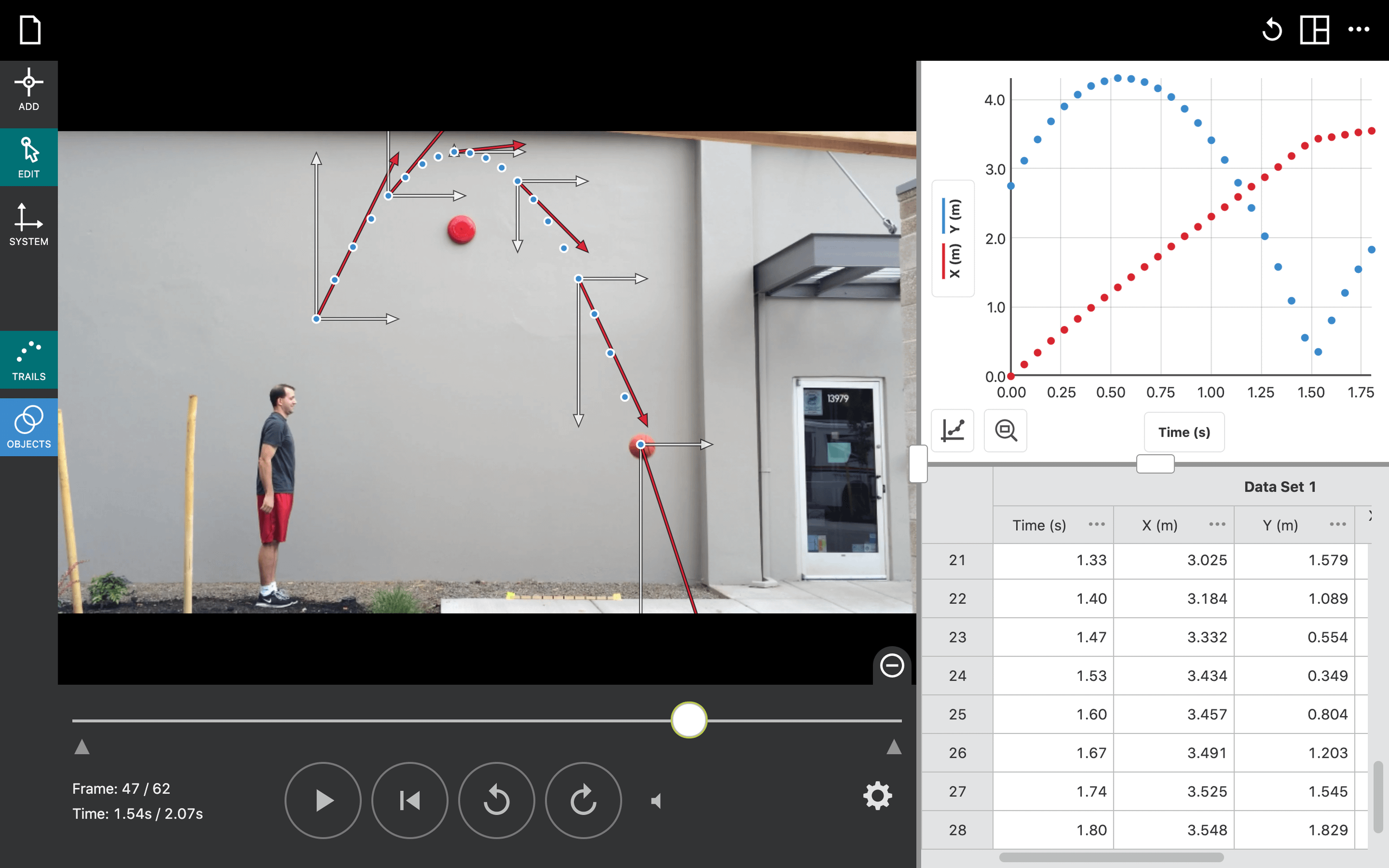Introduction to Weight Lifting
Experiment #2 from Vernier Video Analysis: Conservation Laws and Forces
- Subject
- Physics
Introduction
Strength training is a complex physiological process, but the basic result is that weight lifting causes the muscles to change and grow over time making the subject stronger. In weight lifting, the subject moves a known weight against gravity. One of the simplest forms of weight lifting involves using a bar loaded with weights. The loaded bar is moved through a range of motion that works the chosen muscle group. For example, during a squat, the bar rests on the subject’s shoulders. The subject lowers into a squatting position and then straightens the legs so they are standing again. One full phase of motion is called a repetition (rep). Without resting, the subject repeats the motion a certain number of times to complete a set. A standard weight training routine might consist of 3 sets of 8–10 reps of a given lift or exercise.
Different weight lifting programs are used to build different types of muscle. Weight lifting that focuses on using lighter weights with lots of sets and repetitions tends to build lean muscle that is resistant to fatigue. Weight lifting that focuses on lifting heavy loads with fewer repetitions tends to build explosive and powerful muscles. Athletes will use different weight lifting programs that are designed for the sport or activity in which they engage.
One of the most common lifts is the bench press, which exercises the muscles of the chest and arms. The bench press resembles an inverted push up. The subject lies supine (flat on their back) on a weight bench, with the arms outstretched (fully extended) and the hands oriented so that the palms face the feet. A bar with a set of weights is placed into the subject’s hands; the bar is grasped with the hands and is then lowered in a controlled fashion to the chest and then pushed back up until the arms are again fully extended. Using the weight of the loaded bar and the vertical motion data associated with the rising phase of the lift, you can determine several factors that are important for weight training, including the lift force, work, and power required for the lift.
In this experiment, you will use the Vernier Video Analysis app to examine the motion of a single test subject performing a bench press under two conditions. First, you will analyze a slow bench press, where the subject makes a conscious effort to move the weight at a constant speed through the lift. Next, you will analyze a rapid bench press, where the subject pushes the bar up as fast as they can. Using the analysis features in the app, you will compare the vertical displacement, duration, and velocity of the bar during the rising phase of each lift. You will use this information to calculate the lifting force, work, and power generated during the rising phase of each lift. As time permits (or as required by your instructor), you can complete one or more of the extensions or design your own investigation using videos of lifts that you record.
Objectives
- Use video analysis techniques to obtain position, velocity, and time data for a human subject performing the bench press.
- Analyze the position and velocity vs. time graphs for the vertical motion of the bar as it is raised during the slow and fast press.
- Calculate the net force and lift force for the rising phase of the lift.
- Calculate work and power for the rising phase of the lift.
- [Extensions] Create and analyze your own videos of a person lifting in different ways.
Sensors and Equipment
This experiment features the following sensors and equipment. Additional equipment may be required.
Correlations
Teaching to an educational standard? This experiment supports the standards below.
- International Baccalaureate (IB) 2025/Physics
- The students should understand that power developed P is the rate of work done, or the rate of energy transfer, as given by P = ΔW/Δt = Fv
Ready to Experiment?
Ask an Expert
Get answers to your questions about how to teach this experiment with our support team.
- Call toll-free: 888-837-6437
- Chat with Us
- Email support@vernier.com
Purchase the Lab Book
This experiment is #2 of Vernier Video Analysis: Conservation Laws and Forces. The experiment in the book includes student instructions as well as instructor information for set up, helpful hints, and sample graphs and data.


